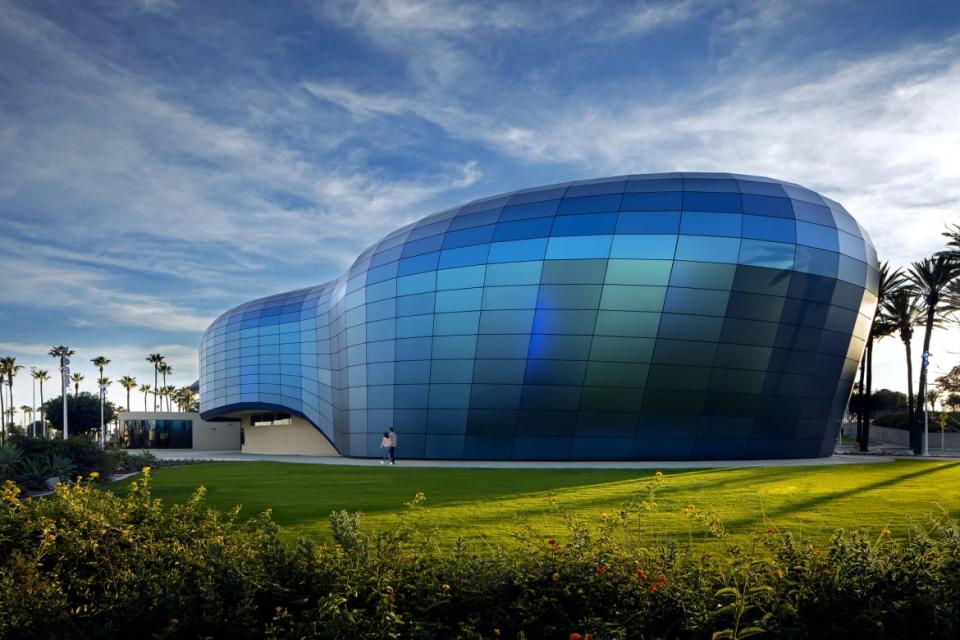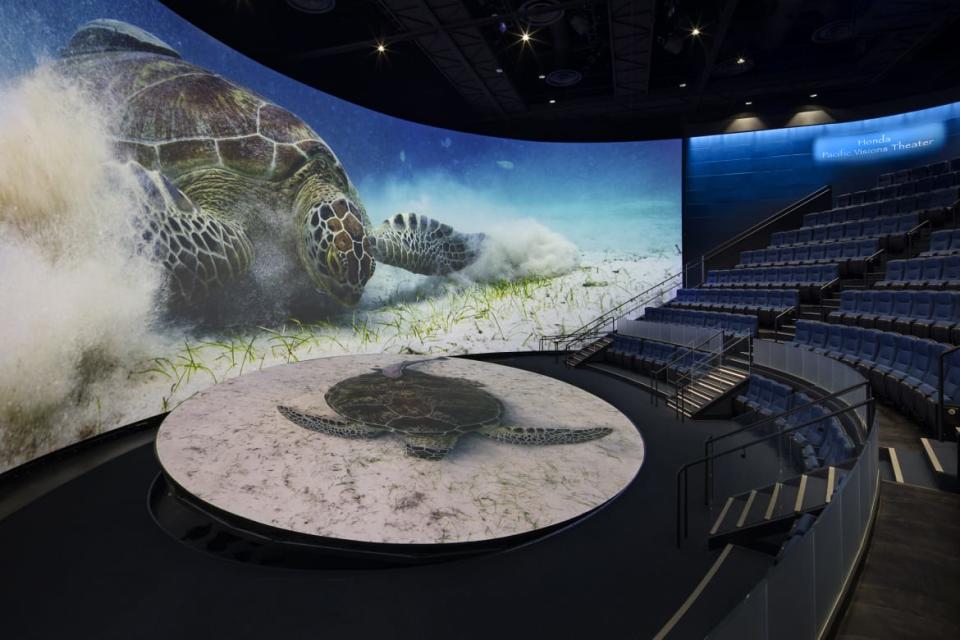Is This the Future of Aquariums?

Some of my fondest memories as a child were family trips from home in Rhode Island down to Mystic Aquarium in Connecticut. A fan of fantasy fiction, beluga whales always seemed to be more out of a fairy tale than real life. Over the years, I’ve made my way to world-class aquariums in Osaka, Baltimore, Monterey, Atlanta, and Medellin. And while I often feel conflicted about the creatures trapped behind the glass, I also always appreciate the educational value that comes along with the wonder they inspire.
That love of aquariums is why I was excited to experience the massive multi-million dollar expansion of the Aquarium of the Pacific in Long Beach, California, which will open to the public on May 24, 2019. Promising to be a game-changer in how aquariums operate in an era in which aquatic life around the planet is under assault, the new wing of this already-popular destination seeks to use technology, not tanks filled with exotic creatures, to inspire.
It’s “not about bigger tanks for bigger animals,” the aquarium’s president and CEO, Dr. Jerry R Schubel, declared in his opening remarks. Instead, the $53 million, 29,000-square-feet new wing is full of social media-friendly oceanic art, a cinema with a 130-feet curved screen, and a large exhibitions gallery that also houses technological interactives. The exterior dramatically changes the aesthetic of the aquarium (previously a pleasant but unremarkable and very '90s complex) with a Warheads-blue-raspberry undulating bit of blobitecture (from the same firm, EHDD, from San Francisco). I didn’t fully appreciate its effect on the man-made inner harbor of Long Beach (also home to the Queen Mary) until returning from a harbor cruise and seeing its shiny blue curves giving the harbor a bit of pop.

The new biomorphic bright blue Pacific Visions wing at the aquarium.
The first room is an art gallery opening with an exhibition called Reefs & Drifters from Convivial Studio, which immerses guests in a multisensory experience featuring underwater soundscapes and a touchable sculpture wall meant to feel like coral for the visually impaired. There are also larger-than-life glass sculptures dangling from the ceiling of a variety of plankton, which is meant to draw a line to the origin of glass in dead plankton. And in a not-so-subtle nod to the social media frenzy inducing Infinity Rooms of Yayoi Kusama, the gallery also has coral sculptures in mirrored rooms called Infinity Coral.
Then it’s on through an orientation gallery with a quick film before entering the massive Honda Pacific Theater, where on the 132-foot screen an 8-minute-film called Designing Our Future shows viewers how intertwined they are with the planet by utilizing more multi-sensory tools like fog, wind, smells, vibrating seats, and ultrasound waves. After that, visitors will end their visit in a “culmination gallery” which offers tests and interactives around sustainable approaches to food and resources, as well as potential innovations.

The inaugural exhibition titled Reefs and Drifters in the new wing's art gallery.
The goal of all this razzle-dazzle? Pretty much the same as the recent Blue Planet 2 and its cinematic brethren—to take advantage of the forms in which modern audiences consume entertainment in order to show them what is at stake in the fight for the environment.
Given the recent United Nations report on the unprecedented level of extinction threats around the globe, any public entity with a profile like the aquarium (nearly 2 million visitors a year) that wants to devote this kind of space to raising awareness on the threats of climate change and pollution is laudable.
And so, the aquarium becomes more than its otters, sharks, turtles, frogs, clownfish (hard not to become obsessed with the black ones), seals, and—most mesmerizing for me—sea dragons. It no longer relies on people reading placards jam-packed with information next to the rainbow-colored fish or the twirling seal. It engages them in a format they already know and love—the screen.

The massive Honda Pacific Visions Theater
Of course, whether that will have an impact is a different matter, and really, only time will tell. While the theater space is spectacular, the current film, Designing Our Future, came across as relentlessly optimistic and wouldn’t have convinced me as a layman that we have too much to worry about. It had a typical Silicon Valley we’re-going-to-innovate-our-way-out-of-this-thing attitude. Which is interesting since folks smarter than me argue there are better ways to convince people about climate change and its effects. Indeed, Schubel’s off-script plea in his speech to journalists attending the opening that we needed to get the word out about how it was regulation that was preventing solutions to climate change was jarring. (The cynic in me was drawn to the “Honda” part of the theater’s name) In the culmination gallery, one older woman summed up the general frustration over the time it took to move between questions in the quizzes when she declared, “Can you please rush them, I don’t have any patience.”
But this is just the first stab, the opening salvo by a place that reaches an audience no U.N. report or New York Times investigation will ever get to. The aquarium not only pulls in hundreds of thousands of children, but also the parents and teachers who are currently in the position to do something about what they consume, how they live, and what policies matter to them. Often these visitors are from parts of the country (Orange County and Arizona) that don’t usually vote for politicians who set climate change and pollution as a priority. And so there will be, no doubt, videos that satisfy the critic who wants more fire and brimstone on the screen. And the technological kinks will be ironed out.
But I love that there are ambitious folks like those at the newly expanded Aquarium of the Pacific achieve what should arguably be everybody’s main goal: getting the message across that as much fun as petting sharks and ogling exotic fish can be, there’s a responsibility for what we leave behind. That if those fish, molluscs, and ocean mammals are going to have their freedom sacrificed, it shouldn’t be just to entertain. The aquarium has raised the bar in its role as a major tourist attraction, challenging other aquariums to answer the question: Can you do more?
Get our top stories in your inbox every day. Sign up now!
Daily Beast Membership: Beast Inside goes deeper on the stories that matter to you. Learn more.

